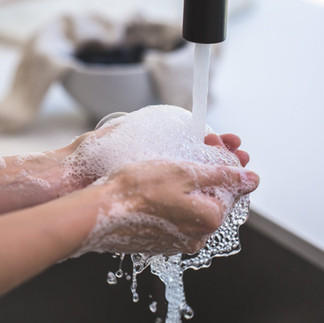The Importance of Safe Food Handling
- Jamilya Woods
- Jan 11
- 2 min read
Updated: Jan 12
At The Woods Hub, we’re dedicated to connecting you with the best local food options from trusted farmers. But ensuring food safety doesn’t end at the farm—it’s a shared responsibility between the farmer and the consumer. Proper food handling in your home is essential to prevent foodborne illnesses and preserve the quality of your meals.
To help you handle your food safely, here are some key tips to remember:
Cleanliness is Key: Always wash your hands, utensils, cutting boards, and surfaces with hot, soapy water before and after handling raw food. This simple step can prevent cross-contamination.
Separate Foods: Keep raw meat, poultry, seafood, and eggs separate from ready-to-eat foods to avoid cross-contamination. Use different cutting boards and utensils for raw and cooked items.
Cook to Proper Temperatures: Use a food thermometer to ensure meats and poultry are cooked to safe internal temperatures. This kills harmful bacteria that can cause illness.
Refrigerate Promptly: Keep perishable foods refrigerated at 40°F (4°C) or below to slow the growth of harmful bacteria. Never leave food out for more than two hours—or one hour if it’s above 90°F (32°C).
Follow Safe Thawing Practices: Thaw frozen foods in the refrigerator, cold water, or microwave—not on the countertop. This helps prevent the growth of bacteria.
At The Woods Hub, we’re here to give you access to better food options and support your journey to a healthier lifestyle. Together, we can ensure that every meal is safe, nutritious, and delicious. Below you will find New Jersey’s Department of Health and USDA food safety recommendations for raw chicken and eggs:
Whole Raw Chicken
Storage: Keep chicken in the refrigerator at 40°F or below and use it within 1-2 days. If you’re not planning to use it soon, freeze it.
Preparation: Wash your hands with soap and warm water before and after handling raw chicken. Use separate cutting boards, plates, and utensils to avoid cross-contamination with other foods.
Thawing: Thaw chicken in the refrigerator, not on the counter. If you need to thaw it quickly, use the microwave or place it in a leak-proof bag submerged in cold water, changing the water every 30 minutes.
Cooking: Cook chicken to an internal temperature of 165°F, checked with a food thermometer in the thickest part of the meat. Proper cooking kills harmful bacteria like Salmonella and Campylobacter.
Leftovers: Store cooked poultry in airtight containers and refrigerate within 2 hours of cooking. Consume within 3-4 days.
Eggs
Storage: Keep eggs in the refrigerator at 40°F or below. Avoid keeping eggs in the refrigerator door where temperatures fluctuate; instead, store them in the main body of the fridge.
Preparation: Always wash hands, utensils, and surfaces after handling raw eggs. Avoid eating raw or undercooked eggs; use pasteurized eggs for recipes requiring raw eggs.
Cooking: Cook eggs until both the yolk and white are firm. For scrambled eggs, cook until there’s no visible liquid. When baking or using eggs in recipes, ensure they reach an internal temperature of 160°F.
By following these steps, you can reduce the risk of foodborne illnesses and enjoy safe, healthy meals. For more details, refer to guidelines from New Jersey’s Department of Health and USDA food safety recommendations.







Comments